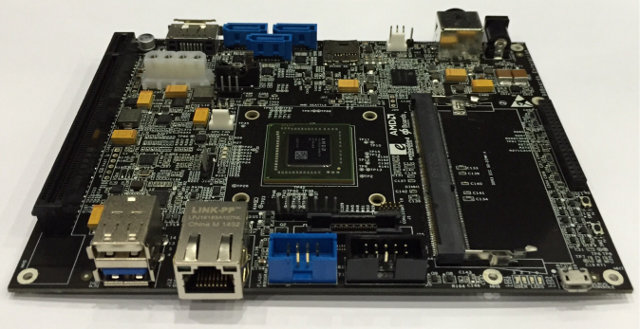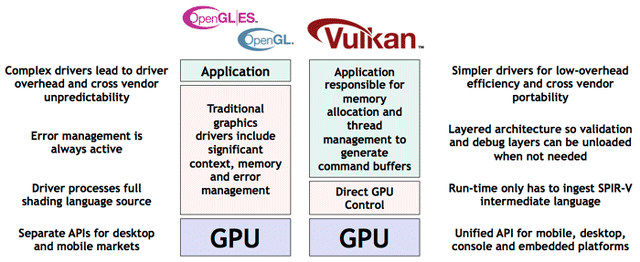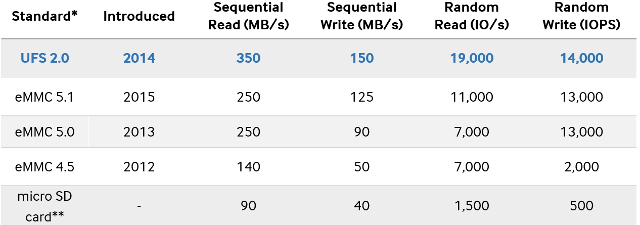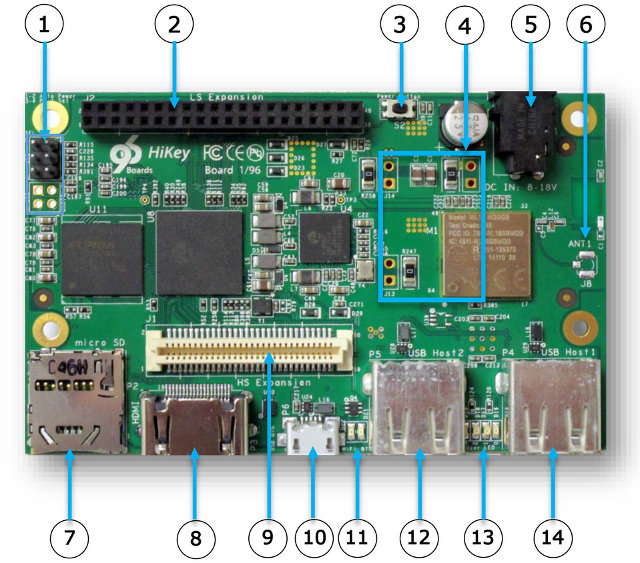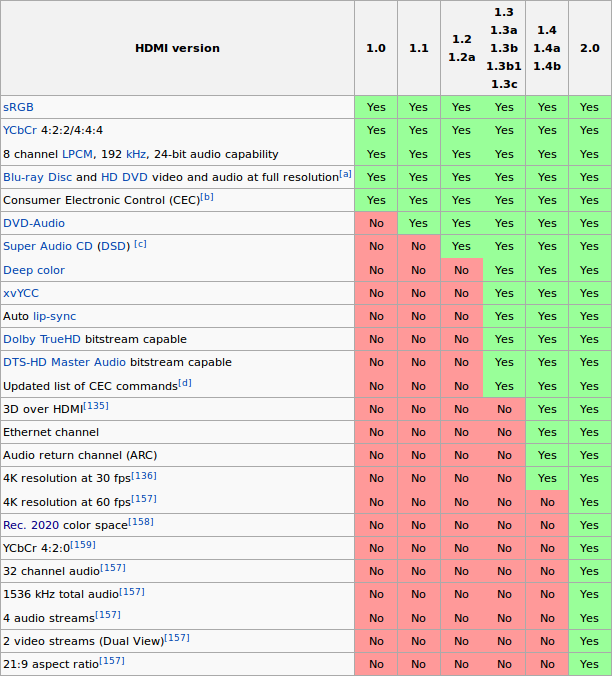Weightless was unveiled over two years ago, as a new standards for IoT leveraging “white space” spectrum, previously used by analog TV broadcasts, for free M2M / IoT communication using low power (10 years battery life) and cost-efficient hardware ($2 hardware) offering a range of 5 to 10 km. Development kits and base stations were scheduled for Q2 2014, but there’s either been some delays or they are only available to Weightless members, as you need to register to get notified once hardware becomes available. The Weightless SIG (Special Interest Group) has not stopped working on the standard as there are now three Weightless standards: Weightless-W (using White band spectrum), Weightless-N (sub-GHz spectrum), and and newly announced Weightless-P offering similar features as 3GPP carrier grade solutions, but at lower costs and lower power consumption. The key features of Weightless-P are shown below: Excellent capacity and scalability for IoT deployment FDMA+TDMA […]
96Boards Enterprise Edition Specification Published
When AMD announces its 96Boards Enterprise Edition complaint server board, I could read quite a few complains because the board used a non-standard form-factor such as mini-ITX. The first version 96Boards Enterprise Edition specification has now been published, and the goods news is that there are two versions: the low cost ($199 to $399) “Standard version” with the new proprietary format, and likely more expensive “MicroATX version” that must complies with MicroATX v1.2 specs. The minimum hardware requirements are listed as follows: Small form factor Standard EE version – 160 x 120mm microATX EE version – 244 x 244mm Design is SoC independent (targets 32 or 64 bit SoCs) 1GB RAM (16GB strongly recommended for server software development) Minimum on-board connectors and expansion I/O 1x Serial over USB UART with microUSB interface 2x USB 1x RJ45 Ethernet Standard version board power from low cost 12V DC Jack connector or standard […]
Perseus Video Codec Claims 2 to 3 Times Better Compression than H.265 using Legacy Hardware
H.265 (aka HEVC) is supposed to half the video bandwidth / bitrate required compared to H.264 by delivering the same quality, and VP9 should also offer equivalent compression, but it’s just not as broadly supported in media processors. UK based V-Nova claims its Perseus codec can even beat that, by providing 2 to 3 times better compression than H.265 thanks to a new approach to video encoding, that allow the codec to leverage existing hardware, meaning it can be encoded with existing computers, and decoded by leveraging the CPU and GPU parallel processing capabilities in existing mobile & computing devices. Perseus codec highlights: Highly efficient – >3x compression vs. state-of-the-art in practical use cases. Benefits further increase with increasing resolutions & frame rates. Extremely fast – Significant processing time reduction thanks to massively parallel architecture. Designed to take advantage of modern hardware Multi-scale (continuously hierarchical) – Single bit stream for […]
Meet Vulkan, The Successor of OpenGL and OpenGL ES 3D Graphics APIs
So far embedded systems are typically using SoCs with GPU supporting OpenGL ES, a subset of the full fledge OpenGL API used in desktop computers and workstations. These royalty-free standards are defined by Khronos Group non-profit organization, and as features in the embedded space and traditional computers merge, the group has now revealed the next-generation OpenGL specs will be called Vulkan. The new API will run on GPUs supporting OpenGL ES 3.1 or greater, take less CPU resources than its predecessors, and support multiple command buffers that can be created in parallel. More work will be required at the application level, but direct GPU control by the drivers will apparently result in less memory copies improving performance, or at least off-loading the CPU. It might be transparent to developers using game engines. GPU drivers will also be less complex. Vulkan will also use the new SPIR-V language shared with OpenCL […]
Samsung Introduces Faster Full-Duplex UFS 2.0 Storage for Mobile Devices
eMMC (embedded multimedia card) provides a boost in read and write performance compared to traditional NAND flash memories, let alone micro SD cards. Samsung has now announced the manufacturing of the first 32, 64, and 128GB embedded memory solution based on Universal Flash Storage (UFS) 2.0 standard delivering up to 350MB/s read speed and 150MB/s write speed, or 40% improvement in read speed over eMMC 5.1.This should help further reduce boot time, and app loading times. Moreover, while eMMC read and write operating are sequential (half-duplex), UFS 2.0 allows for full-duplex operating, meaning writing and reading can happen at the same time. UFS can achieve this feat thanks to a LVDS (Low-Voltage Differential Signaling) serial interface with dedicated read/write paths contrary to the parallel 8-bit interface used for eMMC. Combined with a Command Queue(CQ), which sorts out the commands that needs to be carried out, UFS 2.0 allows three times […]
$129 Hikey Board Features a 64-bit ARM HiSilicon Processor, Complies with Linaro’s 96Boards Specifications
In my post about the Embedded Linux Conference 2015, I noticed a talk entitled “Generalizing Android for Low-Cost 64-Bit ARM-Based Community Boards” to be presented by Khasim Syed Mohammed, Linaro, mentioning that “Linaro is developing an open hardware platform specification to encourage software development on low-cost boards to lower the cost and accelerate the availability of maker and embedded products based on ARM SoCs”. But at the time, I had no details about the specifications themselves. As Linaro Connect HK 2015 is now taking place, the 96Boards Consumer Edition specifications have been released, and Hikey board have been unveiled with HiSilicon Kirin 620 octa core Cortex A53 processor, 1 GB RAM, and 4GB eMMC. Hikey board specifications: SoC – HiSilicon Kirin 620 octa core Cortex A53 processor @ 1.2 GHz (10,000 Dhrystone VAX MIPS) with ARM Mali-450MP4 GPU System Memory – 1GB LPDDR3 @ 800 MHz Storage – 4GB eMMC […]
Embedded Linux Conference 2015 Schedule – IoT, Cars, and Drones
Embedded Linux Conference 2015 will take place in San Jose, California, on March 23 – 25, 2015, and will focus on Drones, Things and Automobiles. The schedule has been published, and whether you’ll attend or not, it’s always interested to have a look at what will be talked about to have a peak into the future of Embedded Linux, or simply keep abreast with the progress in the field. So as usual, I’ve gone through the schedule, and made my own virtual program with talks that I find interesting. Monday 23rd 9:00 – 9:30 – Driving standards and Open Source to Grow the Internet of Things by Mark Skarpness, Director of Systems Engineering at Intel Billions of devices are beginning to come online, and many of these devices, large and small, are running open source software. To fuel this innovation, it’s more important than ever for these devices to use […]
All HDMI 2.0 Implementations Are not Equal
One of the key changes between HDMI 1.4 and HDMI 2.0 is support for up to 4K @ 60Hz instead of just 4K @ 30Hz, and at first, I thought an HDMI 2.0 capable device would be compatible with HDMI 2.0 TV, and it did not need to look into details. I was wrong. There’s a nice table in Wikipedia that explains the main differences between HDMI 1.4 and HDMI 2.0 and older versions. Other features include YCbCr 4:2:0 (That’s the important bit), Rec. 2020 color space, 32 channel audio, 21:9 aspect ratio, and more. By the way, there’s no such thing as an HDMI 2.0 cable (Source: straight from the horse’s mouth), so if you have a cable that support 4K30, it will work with 4K60 as well. Does HDMI 2.0 require new cables? No, HDMI 2.0 features will work with existing HDMI cables. Higher bandwidth features, such as […]



